#Australian reptiles
Text
I think I've permanently broken my brain. Two weeks ago I was talking to work colleagues and somehow I got onto the topic of what if the Teenage Mutant Ninja Turtles were a different species of turtle. Like, if the radiation had spilled on different turtles.
I spent the rest of the day wandering around singing "Teenage Eastern Long-necked Turtles, Teenage Eastern Long-necked Turtles! Heroes with a long neck, TURTLE POWER!"
And now I can't get the damn song out of my head. It's been two weeks!
3 notes
·
View notes
Text
This shy and fast moving lizard is a land mullet (Bellatorias major). It lives in the rainforests of southeast QLD, and said to be the largest species in the skink family Scincidae. This one is about 50cm long.
5 notes
·
View notes
Text


hello to the guy that lives in my garden
#land mullet#it’s breeding season for them and they’ve been having sex in the compost bin every day for like a week#reptiles#skink#australian animals#native animals#australian reptiles#wildlife#wildlife photography#animals
2 notes
·
View notes
Text
I've been doing a lot of volunteer fieldwork with these guys recently so I thought I might as well do an infodump about them here.
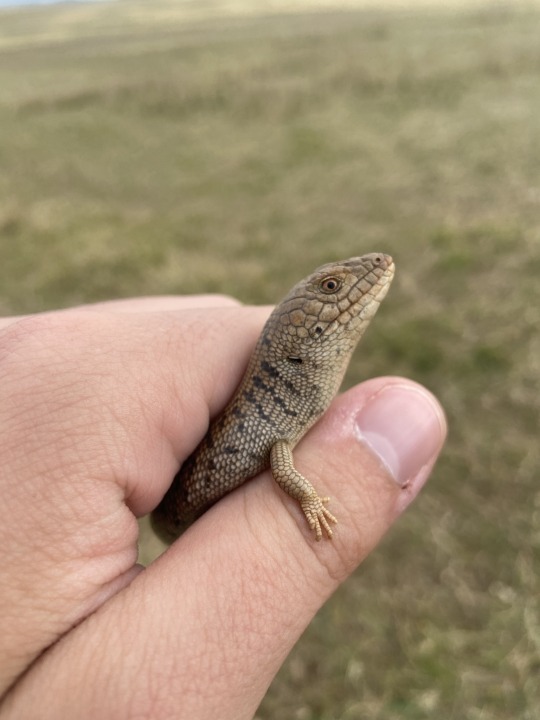
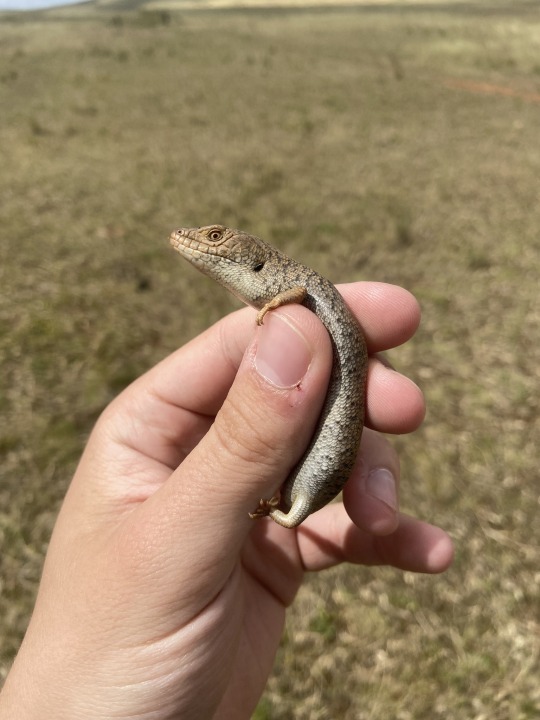
The pygmy bluetongue skink (Tiliqua adelaidensis) is one of the most unique and unusual members of the Tiliqua genus, which includes the true bluetongues as well as the sleepy lizard/shingleback. However, the pygmy bluetongue actually lacks the blue tongue the group is named after, having a pink tongue instead! As its scientific name suggests, it is quite a range restricted species, being found only in open grasslands north of Adelaide, South Australia, as far north as Peterborough. Historically they ranged more extensively across the Adelaide Plains, as far south as Marion, but due to the destruction of suitable habitat they now occur no further south than Kapunda.
While most bluetongues are notable for their large size amongst skinks, with several species regularly exceeding 30 cm in length, the pygmy bluey lives up to its name by measuring a measly average of 9 cm long from snout to vent. This is actually still a fair size compared to the average skink, but it's miniscule by bluetongue standards. Even more notable than their size however are their habits, for they are the only species of lizard that is specialised to live exclusively in old spider burrows! The burrows of both trapdoor and wolf spiders are used, but trapdoor burrows are preferred in most instances.

Pygmy bluetongues spend the majority of their lives within these spider burrows, leaving only to defecate, seek out mates and disperse. The average length of time a lizard spends in a particular burrow is highly dependant on the individual - some are sedentary and spend many years within a single burrow, while others will move around fairly frequently. As well as places to shelter and raise their young (they have parental care, it's very cute), pygmy bluetongues also use the burrows as ambush sites, waiting at the top for suitable prey, usually a mid-sized arthropod, to stray close enough for them to quickly dart out and drag them into the depths.
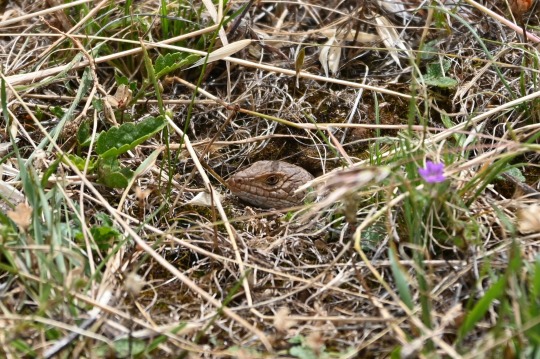
but here's the ambusher
The chief natural predators of pygmy bluetongues are raptors and brown snakes, and sheltering in the burrow is the main defence against both of these threats. Their burrows are often wide enough for a brown snake to enter, but not wide enough for them to open their mouths in - this means all the brown snake usually gets by pursuing a sheltering pygmy is an angry lizard attacking its face, forcing it to retreat.
The lazy lifestyle of the burrow-stealing pygmy bluetongues is certainly unique, and also explains why they have been such an elusive species since they were first discovered by Western scientists in the 1860s. Rarely seen or collected, their habit of inhabiting spider burrows remained undiscovered for the longest time, and by the 1960s they had become so hard to find that they were believed to be extinct. That was until, in 1992, a pygmy bluetongue was found inside the stomach of a roadkill brown snake by amateur herpetologist Graham Armstrong, confirming their status as a Lazarus of the lizard world.
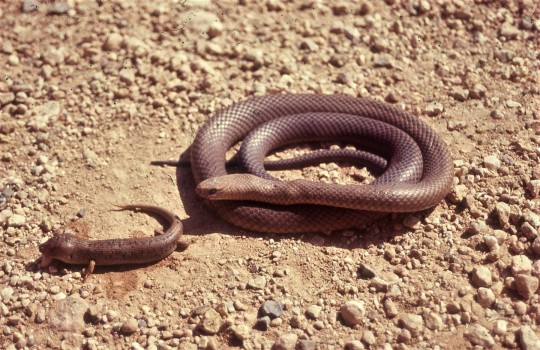
The historic rediscovery of the pygmy bluetongue
(Image credit: Graham Armstrong)
Our previous assumptions of extinction were fortunately premature, but the pygmy bluetongue skink is in serious trouble nonetheless. While they are able to live in a variety of different grassland types, both native and exotic, the extensive modification of their entire distribution through cereal cropping and urbanisation has led to their populations becoming very small and fragmented, giving them a ranking of Endangered on the IUCN Red List. Almost all of these populations are on private land (often grazed by sheep), which makes protecting and/or studying them particularly difficult and complex.
However, when it comes to future threats to the species, climate change is easily the most worrying. As Australia becomes ever hotter and drier, their small remaining distribution is likely to become largely unsuitable, threatening the existence of the entire species. To combat this, researchers are currently investigating the viability of translocating populations further south to areas with cooler climates, providing a safeguard if they do indeed disappear from their remaining natural distribution.
But how do you study a lizard that lives exclusively in small spider holes? Well, if you want to catch them, there's only one tool for the job - the humble fishing rod. Not any special fishing rod either, just a regular rod with a poor mealworm shoddily tied to the end. Using this, you can engage in a tug of war with the lizards until, if they aren't being too difficult, you're able to pull them completely out of their burrow and catch them to perform the necessary measurements and processing. David Attenborough kindly demonstrates this technique in Life in Cold Blood, although in his case the lizard was steadfast in remaining in the burrow!

the sacred tool of the mighty lizard fishermen
returned to their abode
Two additional Fun Pygmy Facts:
Fun Pygmy Fact #1 - The closest living relative of the pygmy bluetongue is the sleepy lizard!
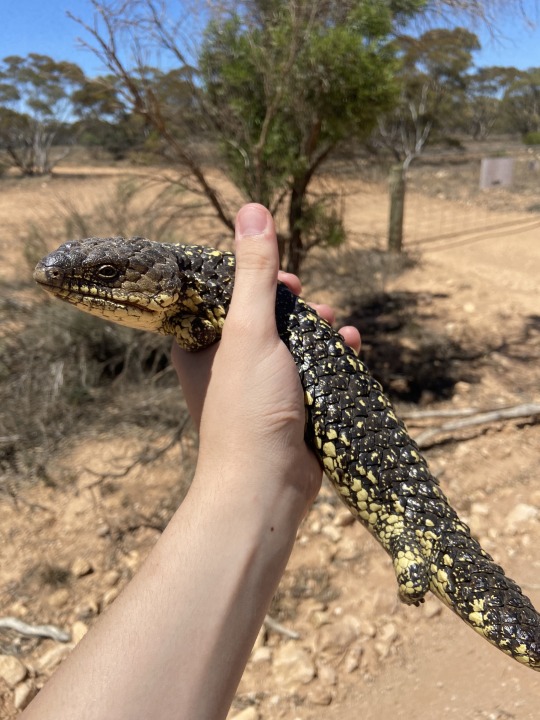
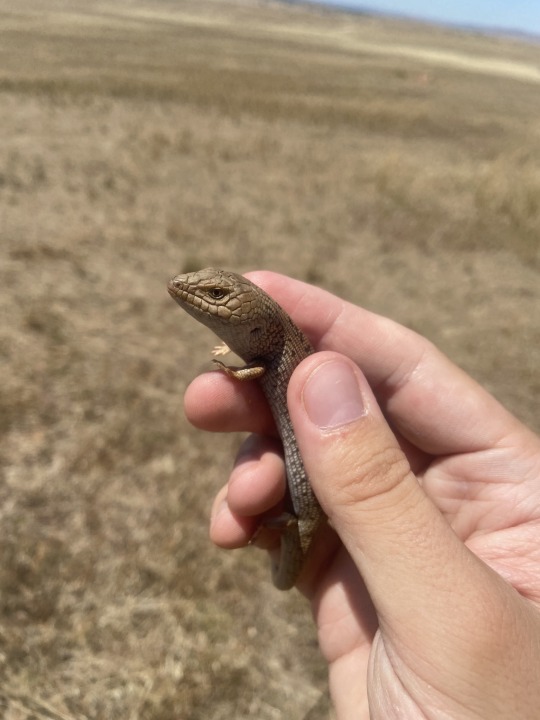
cousins!
Fun Pygmy Fact #2 - Wooden artificial burrows purpose-made for pygmy blueys have proven effective, and the lizards inhabiting them even tend to be in better body condition than those in natural burrows!

#australian wildife#wildlife#reptile#lizard#skink#tiliqua#bluetongue#animal facts#herpetology#natural history#fieldwork#infodumps#my stuff
856 notes
·
View notes
Text
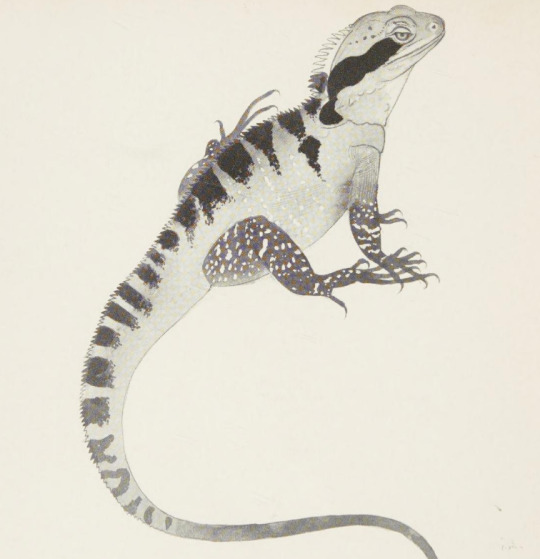
Drawing Animals. Written and illustrated by Maurice Wilson. Published in 1964.
Internet Archive
251 notes
·
View notes
Text
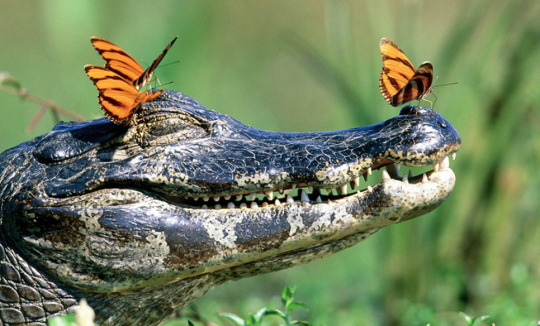
Alligator with butterflies
Image credit: Ama la Vida
233 notes
·
View notes
Text
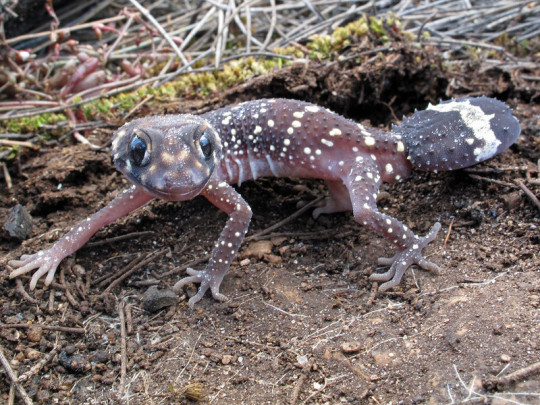
Australian barking gecko (Underwoodisaurus milii) in Brockton, West Australia
by John Anderson
#australian barking gecko#thick tailed gecko#geckos#lizards#reptiles#Underwoodisaurus milii#Underwoodisaurus#Carphodactylidae#squamata#reptilia#chordata#wildlife: australia
573 notes
·
View notes
Text
I really don't like the way people talk about snakes, especially here in Australia. I know a lot of folks are afraid of them and phobias are real and valid but the sheer hatred some folks have for them just makes me sad.
Like I just saw a tik tok of a beautiful wild carpet python climbing off someone's roof into a tree and in the video the person filming is going on about how feral and gross it was, and telling her kid (off screen) how they're so gross and ucky. Based off his voice the kid seemed to be having a good time watching it but the person filming just kept reiterating how ucky it was until he started repeating it back. I get teaching your kids to stay away but you can do that without demonising an important part of our ecosystem.
And my god, the comments. "The only good snake is a dead snake" "it needs a good shovel to the head" etc
I had a bunch of similar comments filtered from when I posted videos of my snake (an albino carpet python named nugget) when he was unwell too. I was posting in hopes someone would know a way to make his vet treatment less stressful on him. I even put content warnings on some of the videos of him because I respect that some people just really don't like them and I wanted to give those folks the chance to just scroll away. You don't have to like them, but why do so many people feel the need to be so mean to them/about them.
Nugget is doing fine now btw.
195 notes
·
View notes
Text

Australian skink
By: Unknown photographer
From: WWF Threatened Animals
1986
111 notes
·
View notes
Text
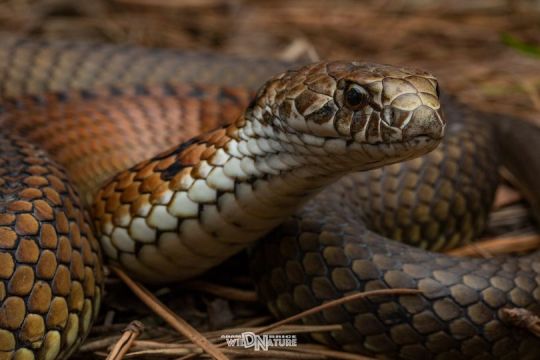
Highlands Copperhead (Austrelaps ramsayi), family Elapidae, Southern Highalnds region New South Wales, Australia
Venomous.
photograph by Adam Brice
#australian copperhead#copperhead#austrelaps#elapidae#venomous#snake#reptile#herpetology#animals#nature#australia
132 notes
·
View notes
Photo

Common Scaly-Foot (Pygopus lepidopodus)
Family: Flap-Foot Family (Pygopodidae)
IUCN Conservation Status: Least Concern
Although its long and seemingly limbless body means that it is easily mistaken for a snake, the Common Scaly-Foot is, surprisingly, actually a member of a family of highly specialized geckos known as Pygopodids or flap-foots that have independently developed snake-like bodyplans to allow for more efficient movement through dense vegetation and subterranean burrows (while they have lost their front limbs entirely, many Pygopodids retain tiny, flap-like hindlegs which are theorized to serve some role in courtship, and this combined with their external earholes and thick, unforked tongues can be used to distinguish them from snakes upon close inspection.) Native to southern and eastern regions of Australia, the Common Scaly-Foot inhabits dense grasslands, heathlands and woodlands and is among the most abundant and extensively studied members of its family. It is active mainly at dawn and dusk (although may become entirely nocturnal during periods of extremely warm weather,) feeds mainly on small arthropods (particularly burrowing spiders, easily navigating their dens with its long and flexible body), and, like almost all geckos, reproduces by laying eggs which are laid underground in small clutches. When threatened, members of this species have been observed to take advantage of their snake-like appearance by rearing up and opening their mouths in a manner that resembles the defensive threat displays of some venomous snakes (although, as Common Scaly-Foots are not venomous and lack any real defensive abilities besides mimicry, this threat is ultimately empty.)
--------------------------------------------------------------------------
Image Source: https://www.inaturalist.org/taxa/36963-Pygopus-lepidopodus
#Common Scaly-Foot#gecko#geckoes#lizard#lizards#reptile#reptiles#animal#animals#zoology#biology#herpetofauna#Herpetology#Australian wildlife
167 notes
·
View notes
Text


A sunny day in Canberra
Australian National Botanical Gardens
On my travels
#original photographers#nature photography#wildlife photography#reptile#lizard#Water Dragon#ANBG#Australian National Botanical Gardens#on my travels
54 notes
·
View notes
Text


#aesthetic#alternative#indoor jungle#plants#green#botanical#urban jungle#carnivore#dark green#carnivourousplant#lizard#australia#reptile#exotic#pets#bearded dragon#pogona#australian#gecko#leopard gecko#bugs#roach
20 notes
·
View notes
Text
Doing sleepy lizard fieldwork in the Mid Murray today involved bountiful encounters with goofy fellas as usual
This guy is somehow missing the keratin on most of his large tail scales, revealing the bony scutes (osteoderms) beneath. We’re not exactly sure how this occurred, hopefully he’s not scuffed up too bad, but it is quite cool to look at


Then there’s grumps over here, sucking on his pacifier. We named him Cupcake after his delightful personality


Cupcake is now getting clamped because he’s naughty and bit someone (actually just taking a measurement of head depth)
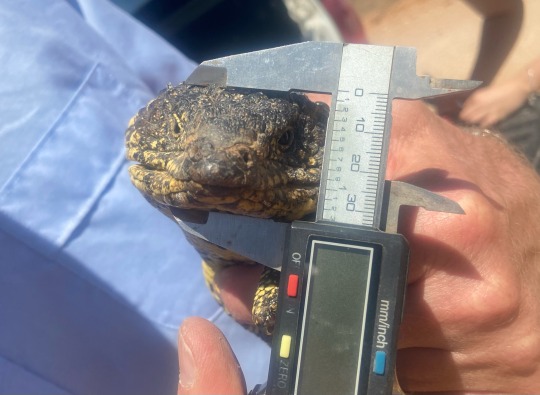
Polite gentleman patiently getting his tail measured (not a sleepy lizard, doesn’t want to be here)
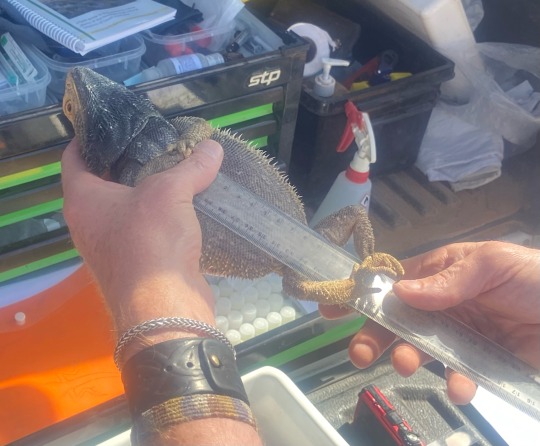
#south australia#australian wildlife#wildlife#reptile#reptiles#lizard#lizards#skinks#bearded dragon#shingleback#fieldwork#herpetology#my stuff
486 notes
·
View notes
Text
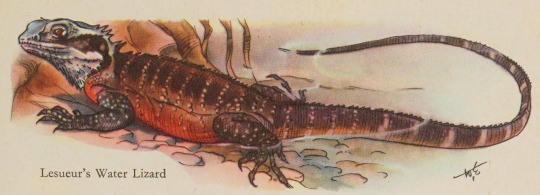
Australian water dragon (Intellagama lesueurii)
Reptiles and Amphibians of the World. Written by Hans Hvass. Illustrated by Wilhelm Eigener. Originally published in 1958.
Internet Archive
251 notes
·
View notes
Photo

Eastern water dragon photographed on the Illawarra escarpment in NSW.
Image credit: Keelan Orrock
#keelan orrock#photographer#eastern water dragon#reptile#australia#new south wales#animal#illawarra escarpment#nature#close-up#australian geographic
202 notes
·
View notes